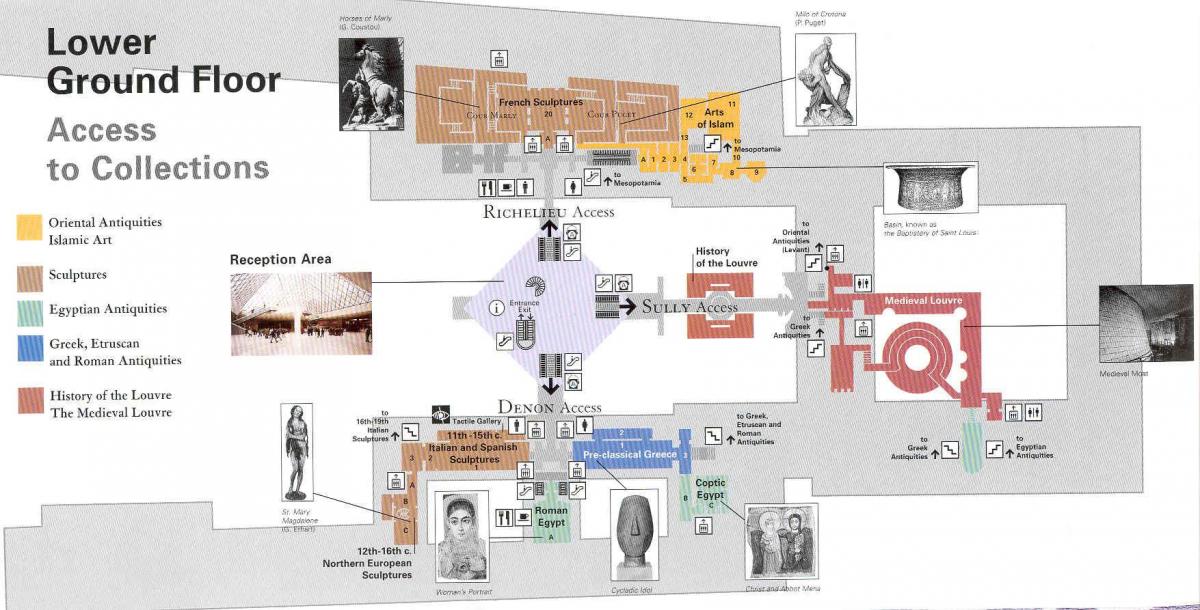search
Louvre map
Louvre entrance map. Louvre map (Île-de-France - France) to print. Louvre map (Île-de-France - France) to download. The louvre museum lies in the centre of Paris on the Right Bank as its shown in louvre map. The neighborhood, known as the 1st arrondissement, is home to the destroyed Palais des Tuileries. The adjacent Tuileries Gardens in louvre, created in 1564 by Catherine de Medici, was designed in 1664 by André Le Nôtre. The gardens of louvre house the Galerie nationale du Jeu de Paume, a contemporary art museum that was used to store Jewish cultural property from 1940 to 1944. Parallel to the Jeu de Paume is the Orangerie, home to the famous Waterlilly paintings by Monet.
The Louvre building complex underwent a major remodeling in the 1980s and ’90s in order to make the old museum more accessible and accommodating to its visitors. To this end, a vast underground complex of offices, shops, exhibition spaces, storage areas, and parking areas, as well as an auditorium, a tourist bus depot, and a cafeteria, was constructed underneath the Louvre central courtyards of the Cour Napoléon and the Cour du Carrousel as its mentioned in louvre map. The ground-level entrance to this complex was situated in the centre of the Cour Napoléon and was crowned by a controversial steel-and-glass pyramid designed by the American architect I.M. Pei.
The underground complex of support facilities and public amenities was opened in 1989. In 1993, on the museum 200th anniversary, the rebuilt Richelieu wing, formerly occupied by France Ministry of Finance, was opened; for the first time, the entire Louvre was devoted to museum purposes as you can see in louvre map. The new wing in louvre, also designed by Pei, had more than 230,000 square feet (21,368 square metres) of exhibition space, originally housing collections of European painting, decorative arts, and Islamic art.
Three glass-roofed interior courtyards in louvre displayed French sculpture and ancient Assyrian artworks as its shown in louvre map. The louvre museum expanding collection of Islamic art later moved into its own wing (opened 2012), for which Italian architects Mario Bellini and Rudy Ricciotti enclosed another interior courtyard beneath an undulating gold-coloured roof made of glass and steel.


